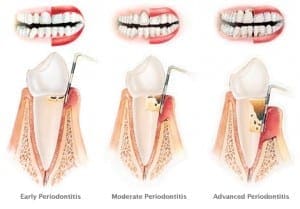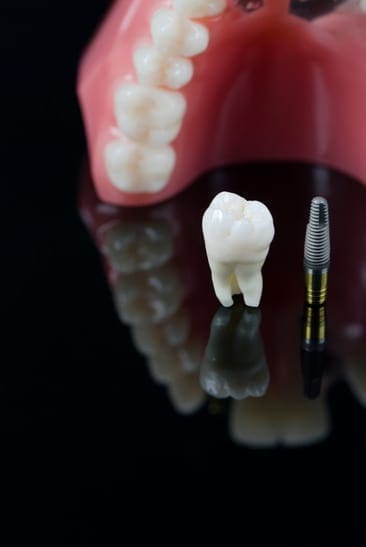North Dallas Dental Crowns
At times, a patient may have a tooth that has broken or fractured, whereby there is not enough tooth structure remaining to place a filling. If there is insufficient tooth structure for a filling to stay “anchored” to a tooth, a dental crown is an excellent option.
Another common use of a North Dallas dental crown is after a root canal procedure on a tooth. After a root canal procedure, a tooth may become “brittle” or be in need of rebuilding due to decay or other problems with the tooth. By placing a dental crown on a root canal tooth, the tooth is reinforced and strengthened by having a protective covering over the tooth. Therefore, when biting or chewing, the tooth is covered and protected by the crown. The underlying tooth is protected and less prone to fracture or breakage. (Keep in mind that if your tooth already has a dental crown before the root canal, it may not need a new crown. If the existing dental crown is adequate and free from decay or problems, a filling may be placed over the hole that was created to do the root canal.)
Almost all posterior or back teeth are covered with crowns after root canals to protect them from breakage. Anterior or front teeth may or may not at times require crowns. Front teeth may need crowns to not only strengthen them but to make esthetic improvements to the patient’s smile.
Dental crowns are also used to strengthen unbroken and “whole” teeth that may have very large fillings already present within the tooth. Teeth that have existing large silver fillings or composite/”tooth-colored” fillings have a high probability of breakage, which may necessitate the need for an extraction of the tooth. Although a tooth may have a large filling, the remaining natural tooth structure or enamel may be weak, which will make a tooth more prone to fracture or breakage. Remember, a tooth when it breaks may fracture into the root of the tooth,h which may make the tooth hopeless to repair or place a crown. Therefore, that tooth would need an extraction. All attempts are typically made to restore and repair a tooth, but at times the tooth is “non-fixable” and an extraction would be needed.
Old dental crowns may need to be replaced if there are problems with the existing or older crown. If there is decay around the neck or margin of the crown, a new crown may be needed. If the older crown is broken or if a hole has been worn through the metal of the crown, a new crown may be needed.
In summary, several different purposes of dental crowns have been described. There are many different reasons that a crown may be needed or a new crown placed on a tooth. Only a dentist can diagnose and determine if a new crown is needed. A clinical examination, if necessary, with an X-ray of the tooth to determine the best course of treatment.
Dr. William H. Miller, a dentist in Dallas, TX, is able to help determine whether or not your tooth would need a crown.

 very important for chewing and appearance. Usually, an examination including X-rays may be completed at the same appointment. It is important to have a complete dental examination by a dentist to check for any problems, along with a dental cleaning. X-rays may also be taken so that the dentist may be able to check out and diagnose any underlying problems accurately.
very important for chewing and appearance. Usually, an examination including X-rays may be completed at the same appointment. It is important to have a complete dental examination by a dentist to check for any problems, along with a dental cleaning. X-rays may also be taken so that the dentist may be able to check out and diagnose any underlying problems accurately.

 missing anterior or posterior teeth. Today, dental implants are the first choice when discussing tooth replacement. By using implants, the adjacent teeth on either side of the space are not affected. “If it’s not broke, don’t fix it” applies very well in this situation. When using a bridge, typically the adjacent teeth must be “cut” or prepared so that they may be used as abutments or “anchor” teeth for the missing tooth. Many times, the adjacent teeth may be totally healthy and therefore no dental reason why they would be included in the facilitation of making the bridge.
missing anterior or posterior teeth. Today, dental implants are the first choice when discussing tooth replacement. By using implants, the adjacent teeth on either side of the space are not affected. “If it’s not broke, don’t fix it” applies very well in this situation. When using a bridge, typically the adjacent teeth must be “cut” or prepared so that they may be used as abutments or “anchor” teeth for the missing tooth. Many times, the adjacent teeth may be totally healthy and therefore no dental reason why they would be included in the facilitation of making the bridge.





 Dental implants, bridges, and dentures might become obsolete in time. Recent research has gotten us closer to discovering how to grow our own teeth!
Dental implants, bridges, and dentures might become obsolete in time. Recent research has gotten us closer to discovering how to grow our own teeth!